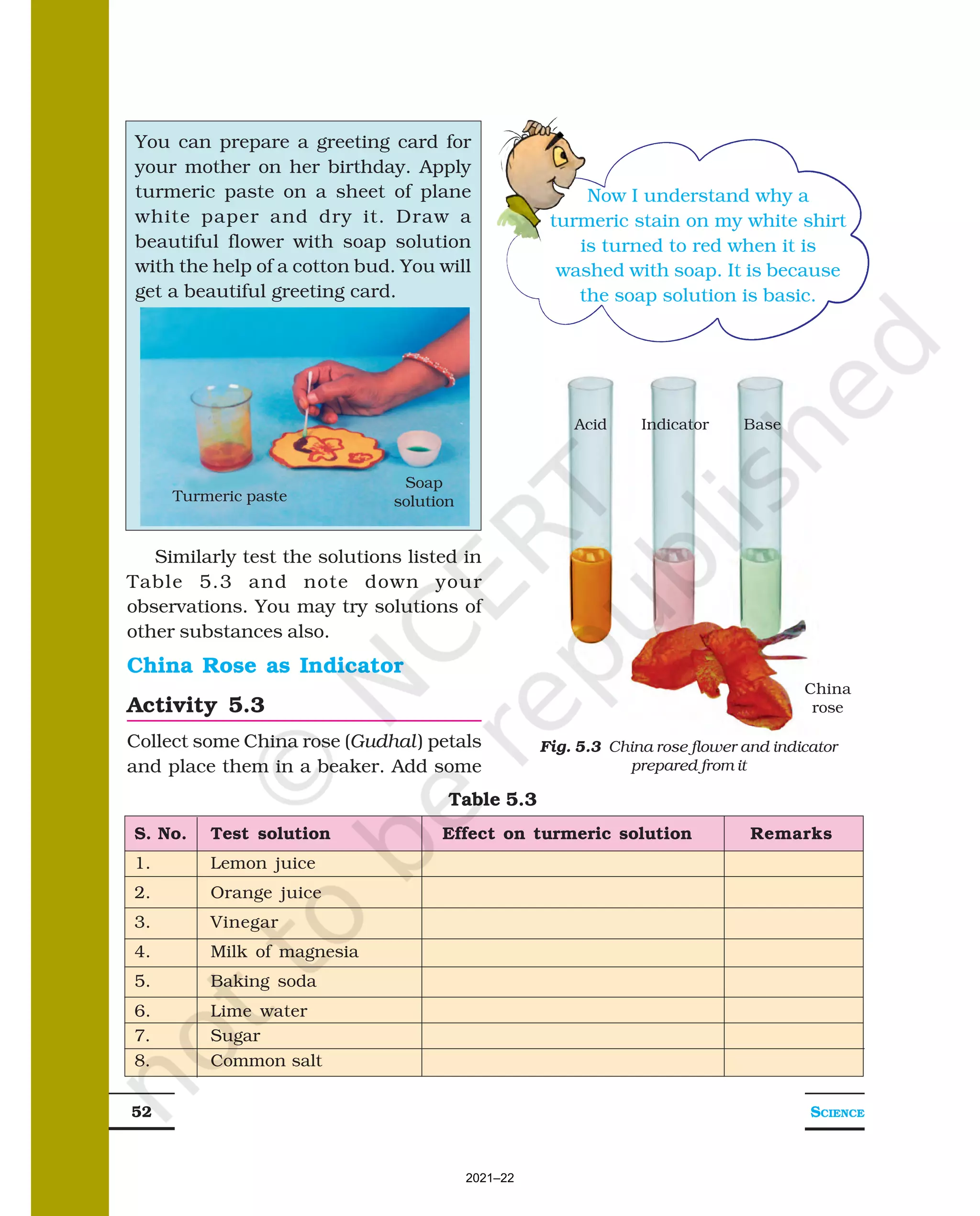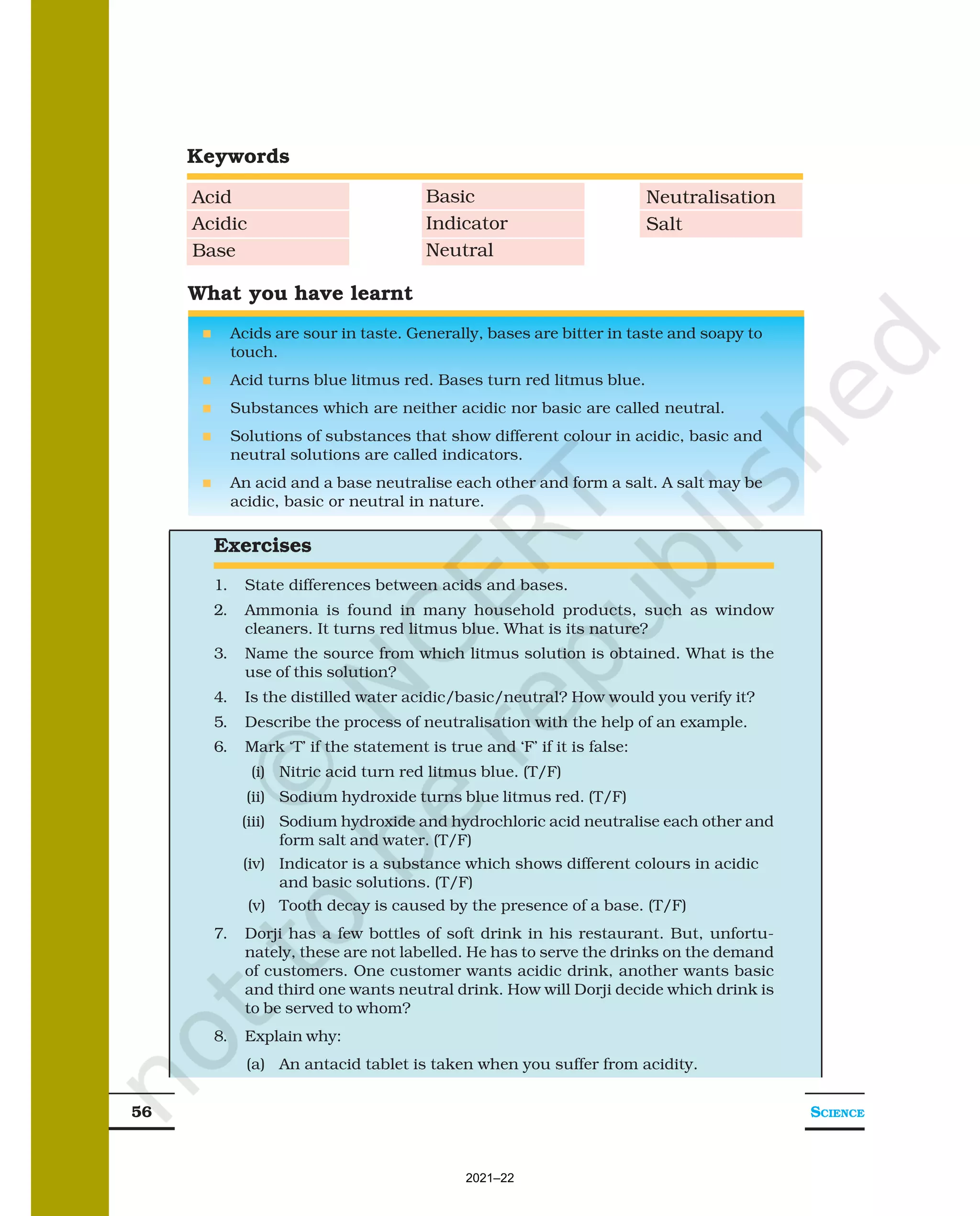The document discusses acids, bases and indicators. It explains that acids taste sour and turn litmus paper red, while bases taste bitter and feel soapy, and turn litmus paper blue. Indicators are substances that change color in acidic and basic solutions, and can be used to test if a substance is acidic or basic. It also describes the process of neutralization, where an acid and base react to form a salt and water, with heat released. Examples of natural indicators like litmus, turmeric and china rose are given, along with their color changes in acid and bases.








